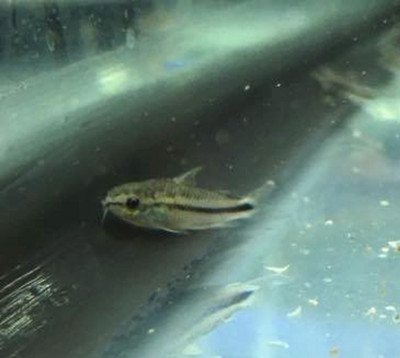Pygmy Corydoras
Posted by Max Gandara on on 9th Apr 2025
Pygmy Corydoras
Welcome to the fascinating realm of Pygmy Corydoras! These tiny, charming creatures are a popular choice for aquarium enthusiasts around the globe. In this blog, we'll explore what makes Pygmy Corydoras such a delightful addition to any home aquarium, their care requirements, and some interesting facts about these miniature marvels.
Introduction to Pygmy Corydoras
Pygmy Corydoras, scientifically known as Corydoras pygmaeus, are a species of freshwater catfish native to the slow-moving rivers and streams of South America, particularly in Brazil. These small fish are known for their social behavior and peaceful nature, making them an excellent choice for community tanks.
Physical Characteristics
Pygmy Corydoras are aptly named due to their diminutive size. They typically grow to about 1 inch (2.5 cm) in length. Despite their small stature, they have a striking appearance with a slender body, a silver coloration with a dark horizontal stripe running from their nose to their tail, and a slightly upturned mouth. Their small size and unique features make them a captivating sight in any aquarium.
Habitat and Tank Requirements
Creating an ideal environment for Pygmy Corydoras is essential for their well-being and longevity. Here are some tips to ensure your aquarium is a perfect home for these delightful fish:
Tank Size
Although Pygmy Corydoras are small, they thrive in groups, so a tank that can accommodate a school of six to ten fish is ideal. A minimum tank size of 10 gallons is recommended to provide ample space for swimming and exploration.
Water Parameters
Pygmy Corydoras prefer soft, slightly acidic water conditions. Aim for the following parameters to keep them healthy:
-
Temperature: 72-79°F (22-26°C)
-
pH Level: 6.0-7.5
-
Water Hardness: 2-12 dGH
Tank Setup
To mimic their natural habitat, include plenty of plants, driftwood, and hiding spots. A sandy substrate is preferred as it allows them to sift through the sand for food without injuring themselves. Ensure the tank is well-filtered and maintain regular water changes to keep the environment clean and healthy.
Diet and Feeding
Pygmy Corydoras are omnivorous and enjoy a varied diet. Providing a balanced diet will ensure they receive all the necessary nutrients. Here are some feeding tips:
-
Staple: High-quality sinking pellets or wafers designed for bottom-dwellers.
-
Treats: Live or frozen foods such as bloodworms, brine shrimp, and daphnia.
-
Vegetation: Supplement their diet with blanched vegetables like zucchini or spinach.
Feed them small amounts multiple times a day, ensuring they consume all the food within a few minutes to prevent overfeeding and water quality issues.
Behavior and Compatibility
Pygmy Corydoras are renowned for their peaceful and social nature. They are happiest in groups and will often swim in tight-knit shoals. Their friendly demeanor makes them compatible with other small, non-aggressive fish species like tetras, rasboras, and guppies.
Breeding Pygmy Corydoras
Breeding Pygmy Corydoras can be a rewarding experience. To encourage spawning, maintain optimal water conditions and provide plenty of hiding spots for the fry. Females will lay eggs on leaves or the aquarium glass. Once the eggs are laid, it's advisable to separate them into a breeding tank to ensure their safety. The eggs typically hatch within three to five days, and the fry will start swimming freely after a few more days.
Conclusion
Pygmy Corydoras are a delightful addition to any aquarium, bringing both beauty and personality to your underwater world. With their easy-going nature and minimal care requirements, they are perfect for both novice and experienced aquarists. By providing the right environment and care, you can enjoy the charming antics of these miniature catfish for years to come.
We hope this blog has inspired you to consider adding Pygmy Corydoras to your aquarium family. Happy fish-keeping!

